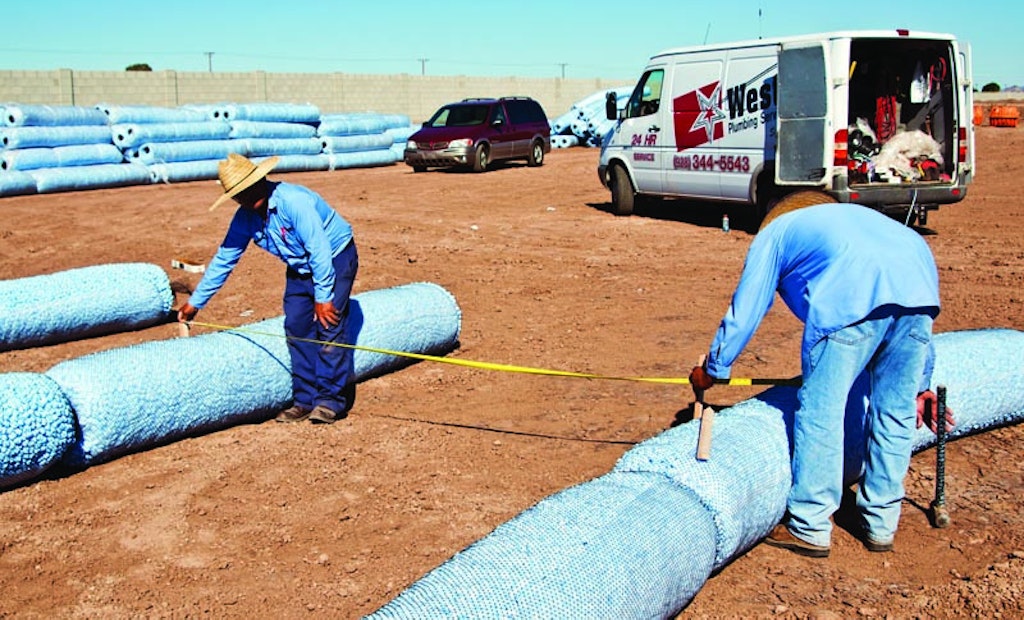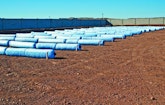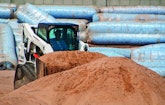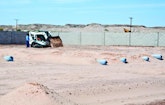
Interested in Alarms/Controls?
Get Alarms/Controls articles, news and videos right in your inbox! Sign up now.
Alarms/Controls + Get AlertsThe problem facing developers of the J & A RV Park in Winterhaven, Calif., was how to make their 5.4 acres productive. They are in an area full of RV parks. Winters are mild with no humidity, low temperatures in the 50s and highs in the 70s, and many people head to the desert Southwest to escape the cold of northern winters. The J & A park would build on this customer base, but creating this new RV park was possible only with creative help from wastewater professionals.
RV hopes
Winterhaven is right across the state border from Yuma, Ariz. On the California side is the reservation of the Yuma-Quechan tribe, and it is here the park was built. It’s a nice piece of land, says Blake Swenson, field superintendent for Westar Plumbing Services Co. of Yuma, who oversaw the project. There are fields all around, and you get the impression of being far out in the country even though the area is well settled. The park doesn’t have a pool and other outbuildings. It’s a well-organized, basic facility in a nice location.
The L-shaped piece of land itself presented problems. It is old river bottom. Perhaps it was an older route of the Colorado, or maybe the Gila. Both rivers wind through this section of the country, and both are lined with checkerboards of irrigated farm fields. The water table is about 4 feet below grade, and the soil is clay, 14 to 17 feet of it in some places. A soil analysis found nothing other than clay. “You could take a piece of that clay, pour water on it and the water would just sit there,” Swenson says.
There is a municipal sewer system, but J & A is about 2 miles from the nearest main, Swenson says. The park would have needed to lay pipe to reach that municipal line, plus spend $200,000 for a lift station and an injector pump, and then the municipality would have charged 37 cents per gallon for disposal. It wasn’t a financially reasonable solution.
When system designer Nicklaus Engineering Inc. did the perc test, there wasn’t any percolation. But under the hot desert sun there was plenty of evaporation. That started Swenson and NEI engineer Stacy Gutierrez thinking. They came up with the idea of an evaporative bed that would be installed on 2 acres of land next to the campground.
The system
Hydraulic capacity was calculated at 160 gpd per bedroom with an assumption of about two bedrooms per space for each of the 50 spaces. There is also a bathroom in the office building.
Each RV campsite has a 4-inch clean-out pipe running into a 4-inch collection main. Collection mains discharge wastewater into the first of five 2,000-gallon septic tanks from Infiltrator Systems. The TW1500 tanks are plumbed in sequence with water flowing in from one to the next. Each tank is equipped with a Zabel Industries filter to remove solids larger than 1/8-inch.
From the last tank, wastewater flows into a manifold that splits the flow among 23 evaporation lines using Infiltrator’s EZflow. Westar’s crew laid a total of 5,873 feet of EZflow. Promoting itself as a green company, Westar especially appreciates products like this made from recycled material, Swenson says.
The impermeable clay soil would not work in an evaporative bed, so Westar built one of sand. Westar’s subcontractor excavated 24 inches of clay from the site for the bed, then brought in 13,200 tons of local fill sand, more than 400 truckloads, to create a sand bed 36 inches deep. There was no reclamation of the land. If plants grow there they will be plants that seed naturally, Swenson says.
From start to finish the project required eight weeks. A Westar crew of five people used six of those weeks and a four-person excavating crew worked for the other two.
Gravity just works
There are no pumps involved. Westar’s installation runs completely on gravity, which Swenson is proud of. “Lift stations are prone to failure. They are prone to costly repairs. If you can get away with not using one, don’t use one,” he says.
Creating a gravity-based system was easier because of the 2-acre site for the evaporative bed. The 24 inches of clay excavated from the site was distributed across the rest of the property, raising that grade by 24 inches above the septic tanks.
This is not to say the excavation was easy for Westar’s subcontractor. “That native clay is very, very hard. It can be equivalent almost to 75 percent of concrete. It was very difficult to excavate because it had never been touched before,” Swenson says.
There will be no problems from heavy seasonal use followed by an absence of waste when the campers return north for the warmer months, Swenson says. When there are no or few RVs in the park, the septic tanks will still be breaking down organic material. Meanwhile, the evaporative bed will have a break of a few months. The system will make no maintenance demands on the owners other than the usual pumping of tanks every few years.
The whole project was also done according to the Universal Plumbing Code. Tribal laws did not require this, but Westar did it anyway. It’s just the right way to do work, Swenson says. Nicklaus Engineering and Infiltrator are both doing their own studies of this system for possible application elsewhere.
When the park opens, its wastewater system will allow productive use of a piece of land that would otherwise have been useless.
“This was a dream they wanted, and it could literally have been stuck in the mud. A lot of our solution comes from ingenuity and the years of experience we have, plus the availability of new technology. We knew we had to solve the problem in an efficient, effective way that would cause the least issues in the future for our customer. We created a system that will last 50 years,” Swenson says.
More information
Infiltrator Systems, Inc. - 800/221-4436 - www.infiltratorsystems.com
Polylok / Zabel - 877/765-9565 - www.polylok.com









